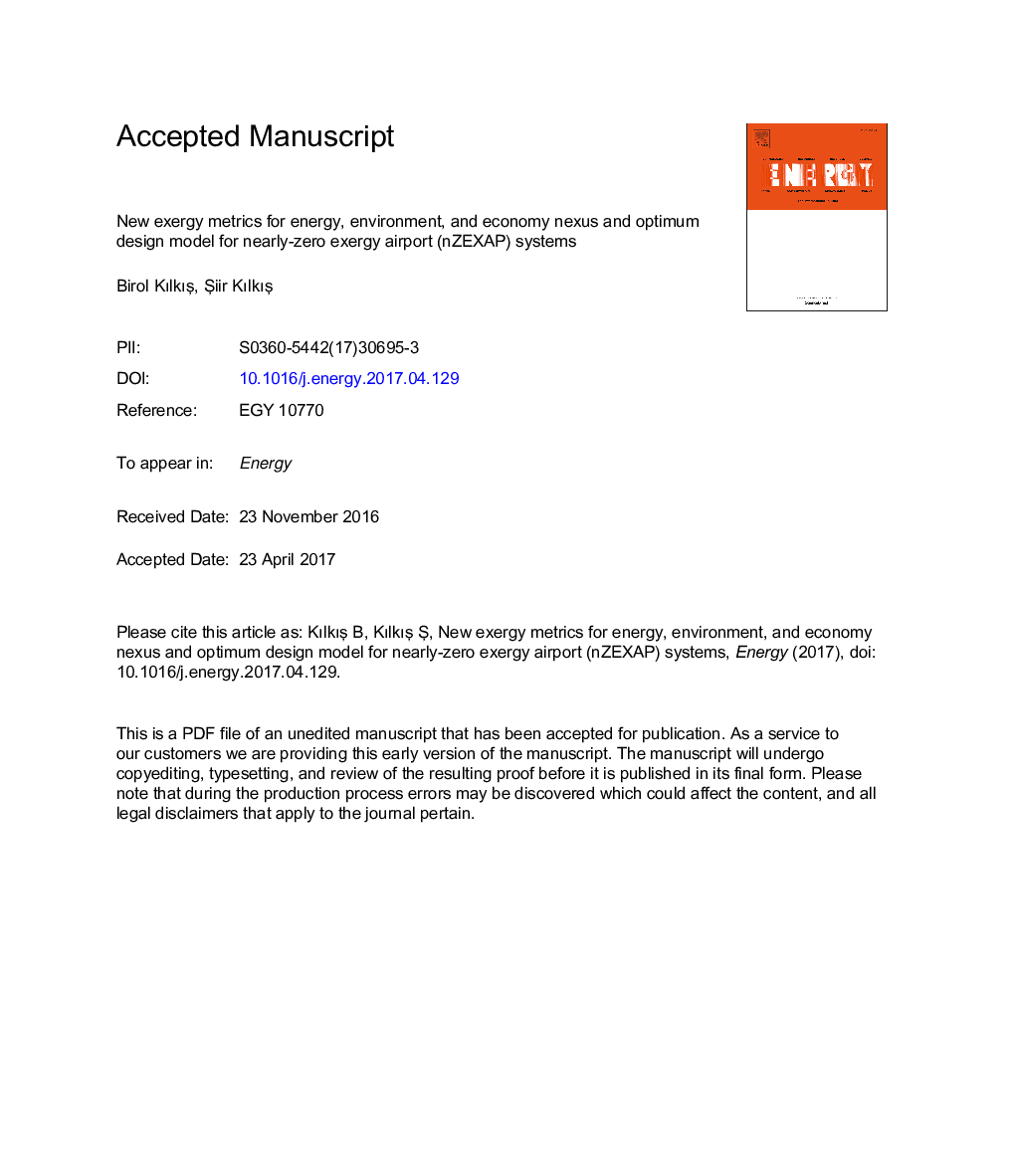| کد مقاله | کد نشریه | سال انتشار | مقاله انگلیسی | نسخه تمام متن |
|---|---|---|---|---|
| 8072597 | 1521410 | 2017 | 42 صفحه PDF | دانلود رایگان |
عنوان انگلیسی مقاله ISI
New exergy metrics for energy, environment, and economy nexus and optimum design model for nearly-zero exergy airport (nZEXAP) systems
دانلود مقاله + سفارش ترجمه
دانلود مقاله ISI انگلیسی
رایگان برای ایرانیان
کلمات کلیدی
موضوعات مرتبط
مهندسی و علوم پایه
مهندسی انرژی
انرژی (عمومی)
پیش نمایش صفحه اول مقاله

چکیده انگلیسی
This paper introduces the Nearly-Zero Exergy Airport (nZEXAP) concept that brings an energy, environment, and economy nexus to a common basis using the Second-Law of Thermodynamics. An nZEXAP airport has a district energy plant of its own, which receives at least 70% of the total exergy input at winter design conditions and 60% at summer design conditions, from onsite renewable energy resources and sustainable systems. These numerical criteria are consistent with the fact that especially ground heat, and solar heat have low exergy, compared to fossil fuels, and solar and wind energy applications in airports are limited. This definition is the basis of the new optimum plant design model for satisfying these new conditions with the least cost that is attributed to the cogeneration (aka CHP) system using an optimum mix of fossil and alternative fuels, such as on site-produced biogas. The main renewable exergy inputs are biogas, ground heat, building integrated or attached PV, and waste heat. Extensive use of on-site wind and roof-top or on-land type of solar applications are limited in compliance to Federal Aviation Administration (FAA) regulations against glint and glare to pilots and air traffic controllers besides potential electromagnetic hazards on avionics. The exergetic performance of the airport district plant is defined and analyzed with the use of the Rational Exergy Management Model (REMM). New exergy metrics for the performance analysis and rating of nZEXAP airports, based energy, economy, and environment nexus were also developed. The optimization problem has three primary design variables, namely the ratio of the optimum cogeneration engine capacity to the peak power load, the split of the generated power supply between the airport and the groundsource heat pumps, and the natural gas to biogas mixing ratio. The objective function solves the primary design variables by a simple search method. The new tool was applied to a conceptual study for the Amsterdam Schiphol Airport in order to compare the impact of an nZEXAP design with the ongoing deep retrofit work. Amsterdam Schiphol Airport aims to make its own activities climate neutral and to generate 10% of its own energy sustainably by 2020. In this comparison, the relative impact of the biogas share, solar input, size and performance of the ground-source heat pumps, and the power-to-heat ratio of cogeneration and absorption cooling were investigated. The results indicate that with the new optimization model, nZEXAP objectives may be satisfied, if techno-economic constraints are also satisfied. Further refinements in the definition may be needed.
ناشر
Database: Elsevier - ScienceDirect (ساینس دایرکت)
Journal: Energy - Volume 140, Part 2, 1 December 2017, Pages 1329-1349
Journal: Energy - Volume 140, Part 2, 1 December 2017, Pages 1329-1349
نویسندگان
Birol KılkıÅ, Åiir KılkıÅ,